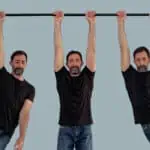You are going to die.
For most of us, our physical development through life looks something like this:
But instead of this being depressing and nihilistic, it should be a call to action. Your most important one.
At some point in our lives we realize that we aren’t spring chickens anymore and we become a bit less interested in looking good naked and more interested in feeling better and making the most of the rest of our lives. It’s a hard thing to slowly realize you aren’t going to live forever.
But once you accept it, you can start to address it.
Short of magical elixirs and divine intervention, there’s some realistic and common-sense things you can do now to protect your body from common injuries and build or maintain the strength or mobility you need to stay physically active into your later years.
Feeling your mortality already? Don’t have time to waste reading the citations and explanations?
Applying Longevity Research to Your “Fitness” Routine
Imagine your future self managed to travel back in time to give you some advice… Besides some hot stock tips, what would you want to tell yourself?
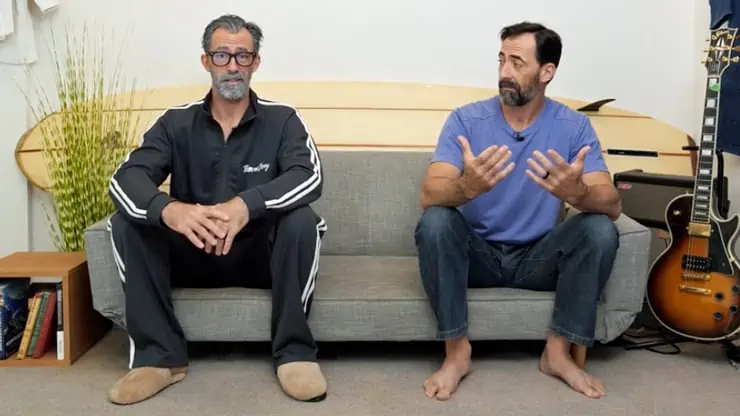
We’re not here to advise you on making your estate plan and figuring out who’s going to get your Pokemon collection (though that’s not a bad idea), but instead remind you a bit about what you already know, that your physical capabilities and capacity are directly related to not just how long you’ll be around, but also how you can make the most and feel the best in that time.
Unsurprisingly, scientists and doctors also want to live long, healthy lives, so there’s a lot of research and literature on this.
This article will share some of the most useful and accepted findings and our recommendations for applying them so you can stay as healthy as possible for as long as possible.
More importantly, we’ll point you toward specific actions you can take and habits you can build into your regular routines. Knowing isn’t the same as doing, and building long-term health isn’t something you can justify putting off for later.
You’ll be dead later, so now is the time to start investing in your future quality of life.
Let’s start with the obvious…
Exercising and Eating Well are Non-Negotiable
Every doctor on the planet will recommend getting “plenty of vigorous exercise” and eating “nutritious food.”
That’s based on a vast pool of data over many generations, but it’s pretty vague.
Rule #1: Do Your Cardio!
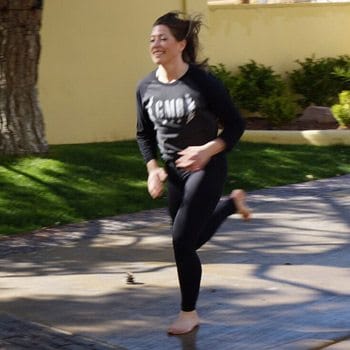 Yes “cardio sucks” and “running is dumb.” But so is dying younger than you need to.
Yes “cardio sucks” and “running is dumb.” But so is dying younger than you need to.
Being a responsible adult means doing some things because you need to, even if you don’t necessarily want to. It shouldn’t be something so terrible you hate every second of it but it doesn’t necessarily have to be “fun”.
Luckily, for the majority of health benefits you don’t have to do very much at all.
There is a general snobbish attitude among some fitnessers about government and health organization guidelines and how they aren’t OPTIMIZING YOUR FULL POTENTIAL but they are based on objective findings over decades of research on actual mortality/morbidity data.
📑 Guidelines
📑 Retrospective Study
📑 Longitudinal Study
Higher baseline CRF is associated with lower HF mortality risk in men, regardless of the number of HF risk factors present. Men should be counseled on physical activity with the goal of achieving at least a moderate level of CRF, thereby presumably decreasing their risk of HF mortality.
- Moderate aerobic exercise of 150 minutes a week, or 75 minutes of vigorous reap massive benefits in reduction of disease and increasing longevity.
- The definition of vigorous is actually what most people reading this already consider exercise.
- Moderate is simply brisk walking.
This means that you are literally in the top percentile if you do 20 minutes of aerobic activity a day. You don’t need a special routine, it doesn’t have to be the same thing everyday, or it can be if you don’t mind it.
The data is very clear, so don’t miss out on this simple way to improve your health by making it more complicated than it needs to be.
Our advice is simple: Get out and do something you won’t mind doing for 20 to 30 minutes at moderate exertion a few times a week.
👉 How to make walking an enjoyable habit
🎙️ Getting your cardio efficiently
It doesn’t have to be all that hard.
You’re busy. Everybody is busy, these days. But this is important, so keep it simple and get it done.
Rule #2: Food is important, and you should eat some.
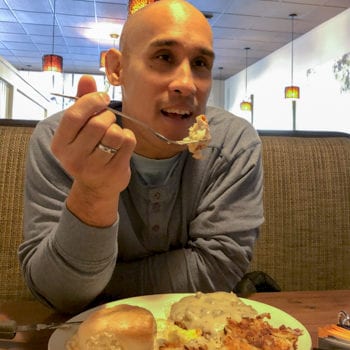 Which leads us to diet and nutrition…
Which leads us to diet and nutrition…
Well of course it’s incredibly important, it’d be ridiculous to deny it. But it’s also ridiculous to think that we have any chance of changing your mind about any of the deeply entrenched views on particular foods you must have and those you should never eat, the percentages of carbohydrates and protein, when you should eat it…
Frankly there’s dozens of ways to put food in your mouth that are all fine and healthy. And we don’t want to argue about it.
Developing Your Physical Attributes for Longevity and Quality of Life
With the obvious stuff out of the way, we can move on to looking at more specific factors – attributes you can train to prepare your body for active aging.
As usual, we like to look at these through the lens of strength, mobility, and motor control:
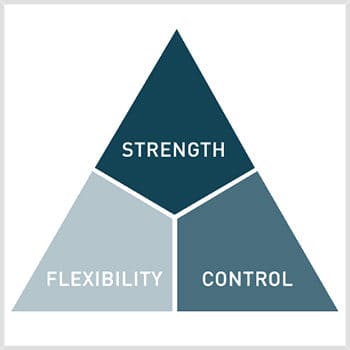
- Strength – Hips, Grips/Hands, Lower limb, Core, Power/Speed
- Flexibility/Mobility – Total body for ease in getting into/out of positions. Bodypart range of motion for ease of activity, movement options
- Motor Control – Balance, Coordination, Decrease risk of falls, Cognitive benefits
We’ll get deeper into each one below.
Getting Strong and Staying Strong
Let’s start with being strong. This makes a lot of sense of course, being strong helps makes a lot of things easier. It’s nice to know that you have less of a chance of hurting yourself the next time you have to move furniture around or any of the unending chores we have to do. And as we’ve talked about before it’s not just about being able to lift the most weight that constitutes strength. This is especially true when it comes to aging well.
Also, while it’s hard to argue against being strong EVERYWHERE, in the context of being most efficient with your time for the most benefit, it’s useful to have some focus.
What should we be working on?
Lower-Body Strength
Strong hips and legs just help you move yourself around better. It’s a very obvious thing when we think about it, but once you drop below a certain threshold of lower body strength, suddenly very basic activities become much more difficult.
And again, it’s not so much being able to lift 300 pounds on your back, but can you get up off of a low couch/chair? Do you have to use a handrail to walk up a few flights of stairs?
Seems easy enough right now for most of us, but how easy will it be for you in 40 years?
Turns out that the ability to sit and stand without using your hands for support correlates with a long, active life.
That doesn’t mean sitting and standing will literally prevent death, but it does suggest that maintaining the leg strength to lift yourself off the floor makes it less likely you’ll be confined to a bed or unable to care for yourself.
Sitting and standing can also be an interesting movement challenge in its own right – how many different ways can you find?
Power and Grip Strength
Power (the ability to produce muscle force faster) also appears to be very important to maintain as we age. Its drop off (without training) occurs right before middle age and has wide ranging effects.
In the lower body its decrease can mean reduced reaction time to deal with things like tripping and falling. In the upper body it can mean the same in regards to the last chance of bracing or stopping yourself from hitting your face on the ground. Not a great thing to think about but it’s very common.
You’ve also probably heard about how your grip strength has been correlated with longevity.
📑 Handgrip strength is inversely associated with fatal cardiovascular and all-cause mortality events
This doesn’t mean that working with hand grippers is going to help you live to 120; more likely it’s a proxy for overall upper body strength and power. And honestly, a stronger grip throughout our life makes things easier to do. And that’s a primary theme here.
What can we do now, and continue to do, that will help make our lives easier as we age?
That’s the million dollar question.
And luckily for us, we don’t need to become professional fitnessers to get significant benefits from just a little bit of focused consistent work.
📑 Both low volume, high load AND low load high frequencies improve strength and ability
Accumulating evidence suggests that minimal doses of RT, characterised by lower session volumes than in traditional RT guidelines, together with either (1) higher training intensities/loads performed at lower frequencies (i.e. low-volume, high-load RT) or (2) lower training intensities/loads performed at higher frequencies and with minimal-to-no equipment (i.e. resistance ‘exercise snacking’), can improve strength and functional ability in younger and older adults.
Keeping the Goal the Goal
It’s easy to read that strength correlates with a long life and then make the leap to assuming you need to get as strong as humanly possible. If “strong” is good, then “more stronger” has to be better, right?
It doesn’t necessarily work that way, and that’s a good thing!
Remember what your goals here are in regards to getting stronger. Most of us aren’t looking to be champion weightlifters and there is absolutely a “strong enough.”
Ask yourself:
- What does “strong enough” look like for you?
- How are you feeling throughout your day?
- Do you feel limited by your strength?
- Do you feel good about what you are able to do and how you handle the occasional harder effort as well as the normal tasks?
Your answers will tell you if you’re on the right track.
Nothing wrong with wanting to be stronger, but it’s important to know that “more” is not a goal. Spend a bit of time figuring out what you really need and it’ll save you a lot of trouble.
Maintaining Mobility for Function and Health
Here’s another no-brainer: life’s better when you can handle normal physical tasks easily:
- Maneuver yourself to fix that loose fitting under the sink.
- Reach up to the top shelf in the cabinet.
- Reach behind to grab something out of the back seat of your car without your shoulders cramping up.
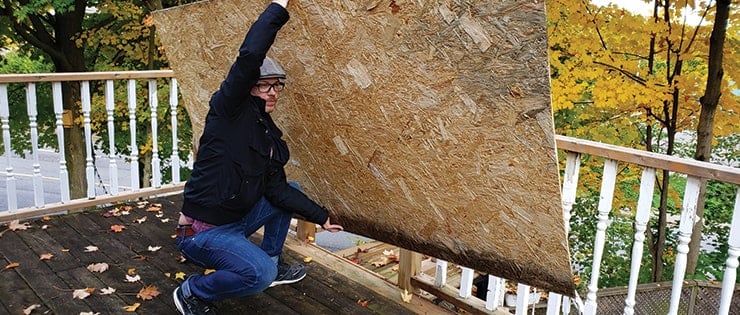
Your ability to move your body into and out of various positions, like getting up off the floor, in/out of bed/couch/car, etc. These seem like very basic things, and they are – they are fundamentally what we need to do everyday.
So what happens when you can’t do them? You don’t miss it until it’s gone.
And just like we talked about with strength, it helps a lot to have some focus about what areas have a good enough level of mobility.
What’s good enough and what should you be focusing on?
Hips, Shoulder, and Spine
We talked a bit about having the leg and and hip strength to get up and down. This also ties in to the mobility to do so as well. Hip and leg flexibility appears to directly correlated with the ease of getting up off the ground.
Again, makes a lot of sense once you think about it.
📑 Getting up off the floor, flexibility matters
Although seemingly simple tasks, the actions of sitting and rising from the floor are also partially dependent on flexibility in male and female subjects of a wide age range. Future studies should explore the potential benefit of regular flexibility exercises for these actions.
And in regards to your upper body, your shoulder mobility and the spinal motions of twisting, backward and forward bending are fundamental motions we do all day without thinking about it.
Once again, you don’t know what you’ve got until it’s gone.
📑 Flexibility loss over time is joint specific
Starting at 30 and 40 years, respectively, for male and female participants, the relative contribution of each composite joint score to FLX dramatically changed. Shoulder contribution to FLX male’s score went from 13.9% at 28 years of age to only 5.2% at 85 years of age. In general, proportionally, shoulder and trunk became less flexible, while elbow and knee mobility was preserved to a greater extent. Our findings indicated that age-related loss of mobility is rather joint-specific, which could be related to distinct routine usage patterns of the major body joints along life.
That means the movements and ranges you don’t train are the ones most likely to cause problems later on.
Yes, that’s obvious, but it’s hard to see what’s not there.
The best way to avoid blindspots in your physical capability are to make sure from the beginning that you’re covering a broad spectrum of movement patterns and ranges of motion in you regular routines.
Motor Control, Safety, and Cognition
Motor control and physical skill acquisition can be complicated topics. But in terms of healthy longevity, the major benefits relate to falls and cognition.
Learning to Fall Safely
As capable adults, we don’t think about falling until it’s too late, but falls are a major issue as we age because our bodies are more fragile, and we don’t recover as quickly. And every day spent resting in bed is a day we aren’t active and moving.
Most martial arts teach falling techniques to new students so they can practice safely. Here’s some basics you should learn:
Reasons to take falls seriously:
- Falls account for over 8 million hospital emergency room visits, representing the leading cause of visits (21.3%).
- Slips and falls account for over 1 million visits, or 12% of total falls.
- Fractures are the most serious consequences of falls and occur in 5% of all people who fall.
- Half of all accidental deaths in the home are caused by a fall.
- Most fall injuries in the home happen at ground level, not from an elevation.
- Each year in the United States, one of every three persons over the age of 65 will experience a fall. Half of which are repeat fallers.
📑 Source
Here’s a couple more:
📑 Safe landing strategies during a fall
Squatting was an efficient strategy to reduce impact in backward falling (g=1.77), while elbow flexion with outstretched arms was effective in forward falling (g=.82). Also, in sideways falling strategies, martial arts rolling (g=2.70) and forward rotation (g=.82) were the most efficient strategies to reduce impact load.
📑 Balance is task specific and training should have a variety of types
Our systematic review and meta-analysis showed exclusively small-sized correlations between types of balance performance across the lifespan. This indicates that balance performance seems to be task-specific rather than a “general ability.” Further, our results suggest that for assessment/training purposes a test battery/multiple exercises should be used that include static/dynamic steady-state, proactive, and reactive types of balance.
Cognitive Benefits of Exercise
When we polled some of our clients for their concerns about aging, the biggest fear is cognitive decline – loss of mental abilities that would make them a burden on their families.
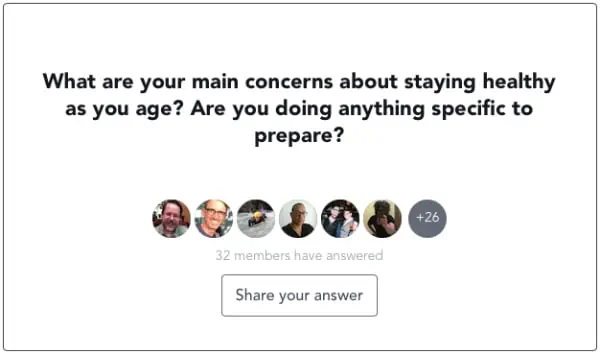
There’s a lot of strategies people try to keep their minds sharp.
Cognitive benefits from “brain games” and such have been in the news for quite some time, spawning various apps and activities purporting to help you stave off dementia. But physical activity, particularly balance, coordination and skill training is just as good, if not better, than playing wordle….
The present theoretical perspective paper aims to convey several key messages: (1) brain development is critically affected by lifestyle; (2) physical training allows one to develop and maintain brain structures during ageing, and may be one of the keys for good quality of life as an older person; (3) diverse stimuli are a key factor in maintaining brain structures; (4) motion, relation, and passion are key elements for contrasting the loss of the grey and white matter of the brain.
📑 Source
📑 Balance training improves memory and spatial cognition in healthy adults
These results suggest that balance training is capable of improving particularly memory and spatial cognition.
Significant improvements in memory were observed in both the cycling and the stretching/coordination group as compared with the sedentary control group. The improvement in episodic memory correlated positively with the increase in cardiovascular fitness. The stretching/coordination training particularly improved selective attention as compared with the cycling training.
This is one of many reasons we emphasize locomotor movement training in most of our programs. It’s a part of the process of cognitive development in infants, and it can help retain cognitive ability in adults.
There’s no good reason you wouldn’t want that to be a staple in your training routine.
Knowing that falls and mental decline are major concerns for healthy aging, any longevity-focused training should prioritize exercises that protect your ability to deal with falls and stimulate your brain.
Longevity-Focused Workout Example
So that’s a lot of information, especially if you read the citations.
Part of the challenge of acting on this stuff – even the obvious parts – is that there’s just so much to try and fit in. Too many disconnected pieces to fit into a cohesive routine. So you have to prioritize and choose carefully.
This routine is a solid example of how you can cover a lot of ground with a very few select movements:
It only takes a few minutes – work it into your regular activities and training, maybe 2-3 times a week as a bit of extra insurance against pain and physical decline.
Remember: you don’t have to do everything – just pick the things you can and then do those consistently.
Proactive Training for Longevity
I’ve had a half-joke for a few years that I don’t need to live forever. I just need to make it to The Singularity.
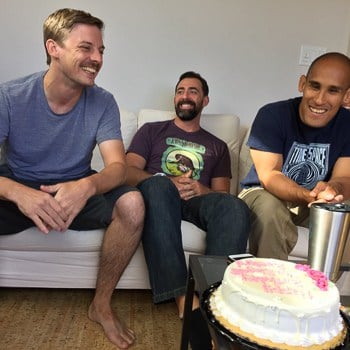 At a very practical level, this is the fundamental concept Ryan, Andy, and I all follow in our training – stay healthy enough to keep doing the things we enjoy as long as we possibly can.
At a very practical level, this is the fundamental concept Ryan, Andy, and I all follow in our training – stay healthy enough to keep doing the things we enjoy as long as we possibly can.
We’ve built this proactively into our programs, and you should integrate it into your life as well.
Basic recommendations:
- Take regular walks and eat good food
- Develop your leg strength and mobility
- Strengthen your connective tissues and bones
- Build your grip strength and shoulder mobility
- Actively practice balance and agility
If you make sure to hit each of those just a little bit each week, you’ll be stacking the deck in your favor for a long, active life.
That’s not to say you couldn’t still get hit by a truck tomorrow.
Nobody thinks today Is gonna be the day that they die, but some of you are in for a surprise today.
Eat arbys
— Nihilist Arby's (@nihilist_arbys) September 26, 2022



